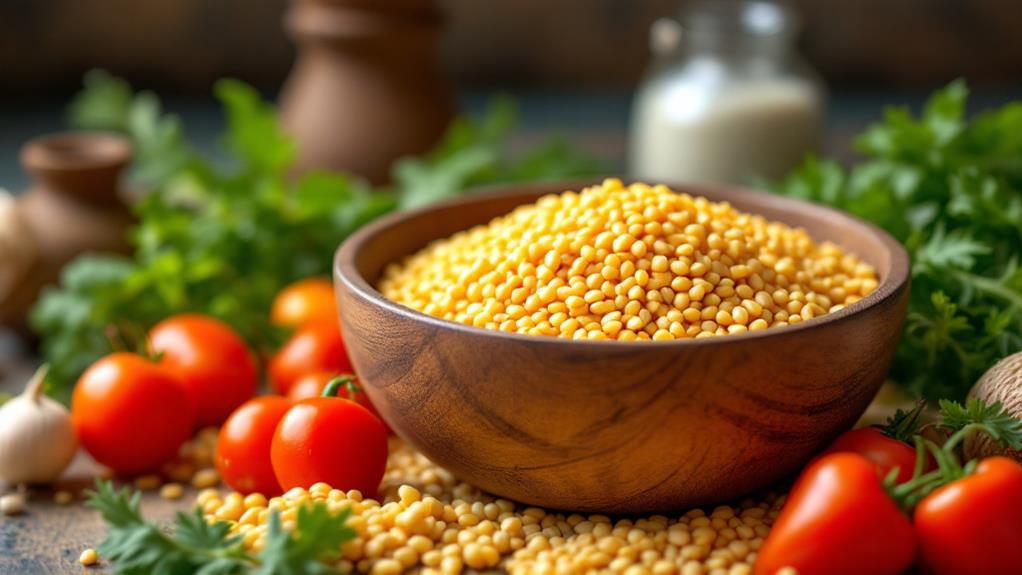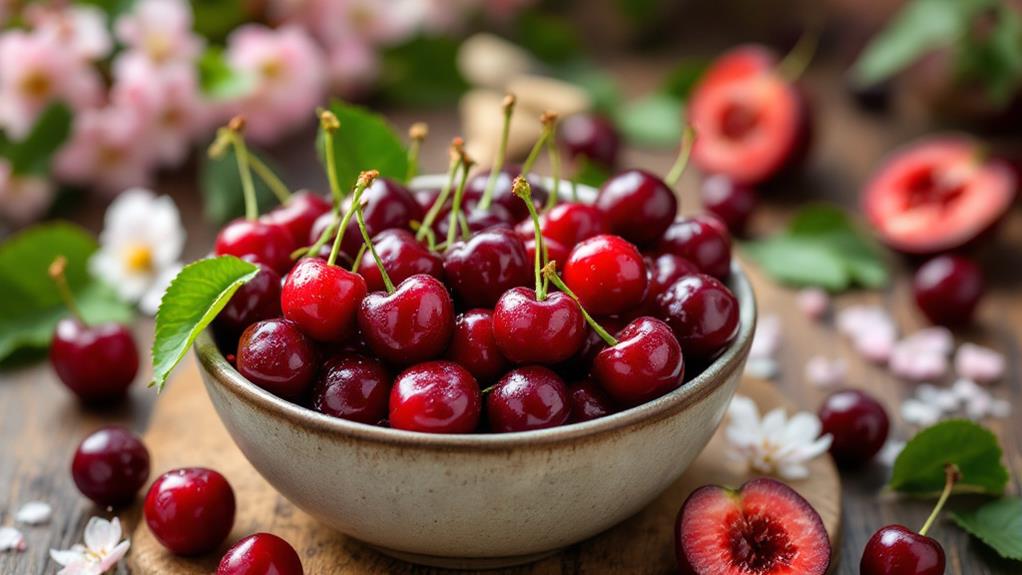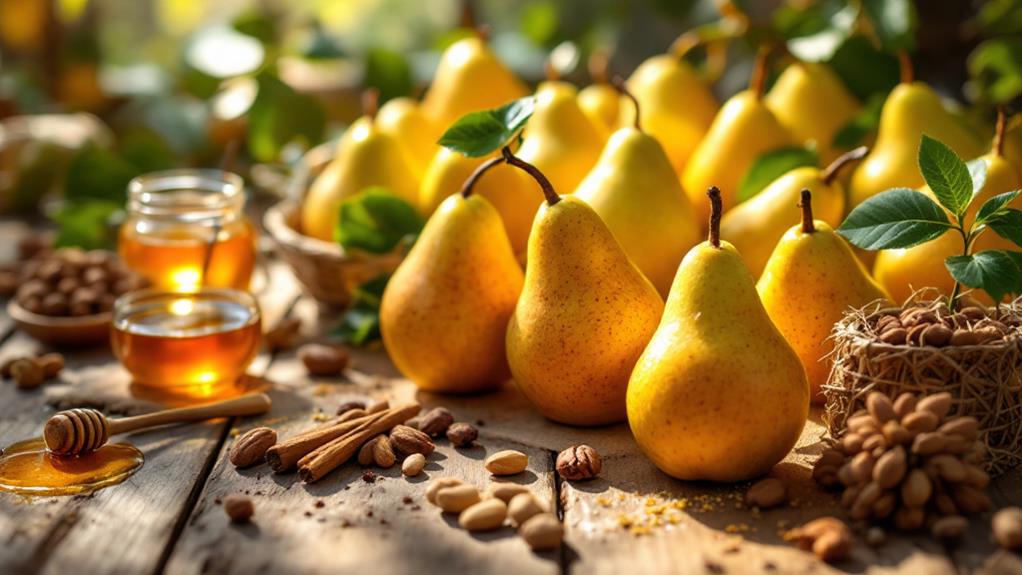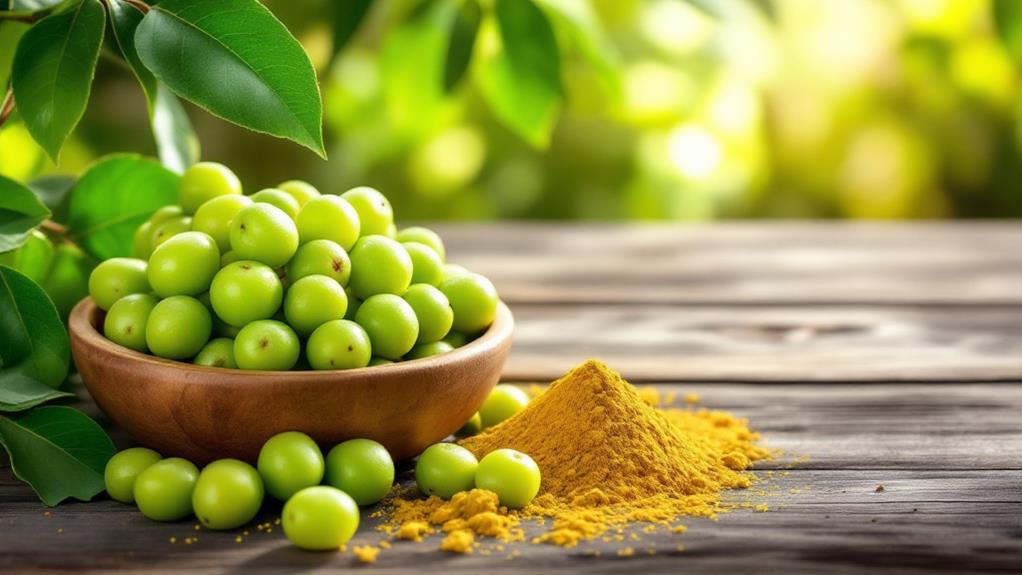Everything to Know About Key Lime: Health Benefits and Culinary Uses
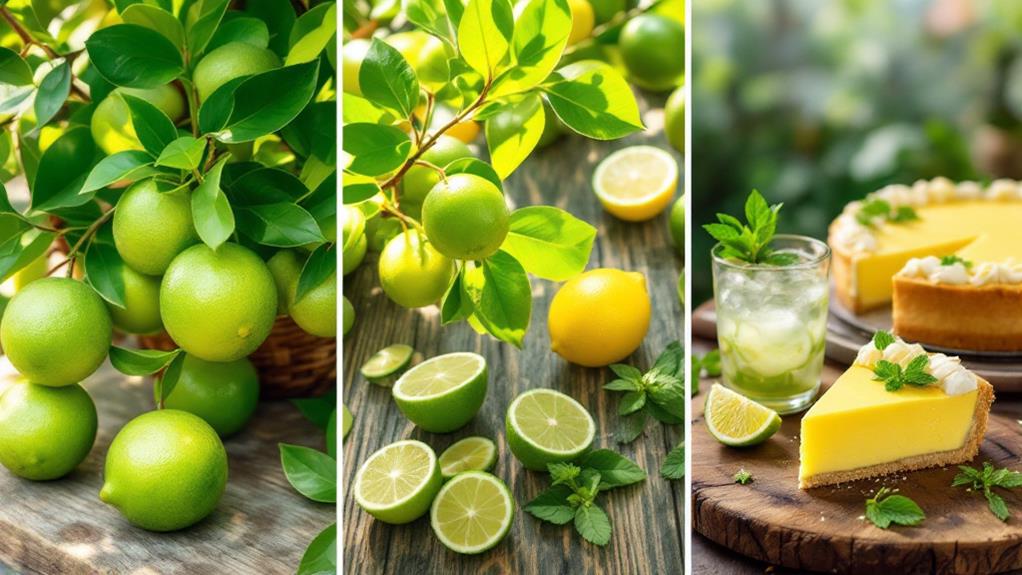
Key limes are small yet mighty fruits native to Southeast Asia, brimming with vitamin C, dietary fiber, and antioxidants like flavonoids and limonene. These nutrients help reduce inflammation and enhance your immune system. With only about 20 calories per medium lime, they're a low-calorie, flavorful supplement to your diet. In the kitchen, key limes shine in both sweet and savory dishes. Use them for iconic key lime pie, zesty marinades, or revitalizing beverages. They're more acidic than Persian limes, providing a distinctive, aromatic tang. Uncover what makes key limes so exceptional and how to incorporate them effortlessly into your meals.
Key Lime Overview
A symphony of flavors awaits you with the key lime, a small yet mighty citrus fruit celebrated for its tart and slightly sweet profile. Native to Southeast Asia, the key lime, or Citrus aurantifolia, has traversed across the globe, finding its way to the Americas in the 16th century thanks to Spanish adventurers. Now thriving in warm climates like Florida and the Caribbean, this aromatic citrus fruit is known not just for its distinctive taste, but also for its impressive health benefits.
Key limes distinguish themselves from their Persian counterparts with their smaller size, higher acidity, and intense aroma. When fully ripened, they turn a yellowish-green, signaling a burst of flavor that's perfect for numerous culinary uses. Regardless of whether you're whipping up a tangy key lime pie or a revitalizing beverage, these limes add a unique twist to any dish.
Beyond taste, key limes pack a nutritional punch. High in vitamin C, they provide about 35% of your Daily Value per medium-sized fruit. They're also rich in phytochemicals and dietary fiber, contributing to overall health benefits. Including key limes in your diet not only improves flavor but also increases your nutritional intake.
Nutritional Benefits
As you savor the bold flavor of key limes in your culinary creations, you're also enjoying a fruit packed with nutritional benefits. Key limes are a low-calorie delight, containing only about 20 calories per medium-sized lime. They offer 7 grams of carbohydrates and 2 grams of dietary fiber, making them an excellent choice for anyone conscious of their health. Fiber in key limes supports digestion and promotes cardiovascular health, contributing to their myriad of health benefits.
Rich in vitamin C, key limes provide approximately 21 milligrams or 35% of your daily value from just one medium lime. This vitamin is vital for immune function and maintaining healthy skin. In addition to vitamin C, key limes contain B vitamins such as folate and pantothenic acid, along with important minerals like potassium, calcium, and magnesium, which contribute to your general health.
Furthermore, key limes are packed with antioxidants, including flavonoids and limonene. These powerful phytochemicals help reduce inflammation and may lower the risk of chronic diseases. Thanks to their low-calorie nature and versatile culinary uses, key limes are a fantastic enhancement to a balanced diet, improving both flavor and health.
Culinary Applications
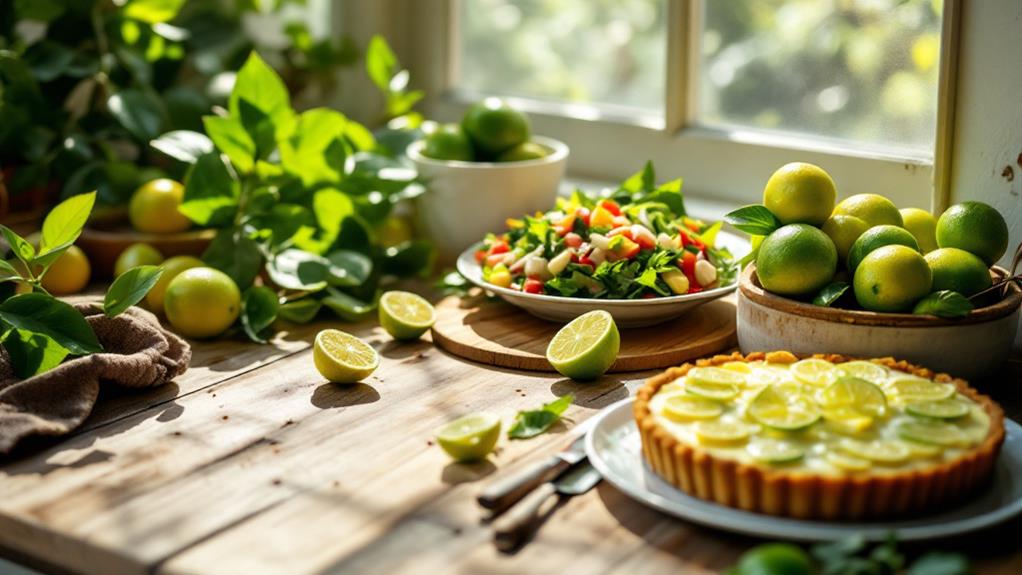
With their distinct tartness, key limes bring a lively punch to a wide range of dishes and drinks. One of the most beloved culinary applications is the iconic key lime pie. This dessert boasts a graham cracker crust and a creamy, tart filling made from key lime juice, egg yolks, and sweetened condensed milk. The pie perfectly showcases the tart flavor that key limes are known for.
Beyond desserts, key limes play an essential role in beverages. They're a key ingredient in cocktails like the classic key lime margarita and invigorating non-alcoholic drinks such as limeade. Their tart flavor boosts these beverages, making them perfect for any occasion.
Key limes also shine in savory dishes. Use them in marinades and dressings to add a zesty kick that improves seafood, chicken, and salads. Their juice and zest can transform baked goods, like key lime bars and cakes, providing moisture and a distinctive tangy flavor.
When it comes to juice extraction, key limes require a bit more effort due to their high acidity. You'll need more fruit, as one key lime yields about two teaspoons of juice. But the lively flavor is worth every squeeze.
Growing Conditions
Key limes thrive in warm, tropical climates and need full sun exposure and well-drained soil for ideal growth. These citrus trees, reaching heights of 6 to 12 feet, do best when you provide them with regular watering. However, it's vital to maintain a moisture balance. Overwatering can lead to root rot, jeopardizing the tree's health. Due to their cold-sensitive nature, key limes demand a bit more attention, especially when temperatures drop. Make certain to protect them from frost to guarantee peak growth and a successful harvest.
When cultivating key limes, focus on selecting a location that offers plenty of sunlight. Full sun exposure is fundamental for the tree to produce healthy and flavorful fruit. The fruit is typically harvested when it turns a yellowish-green, signaling ripeness and maximum flavor potential. Careful cultivation practices are necessary, particularly in regions prone to colder temperatures. By maintaining the right moisture levels and avoiding frost, you can guarantee a thriving key lime tree.
Key Lime vs. Other Limes
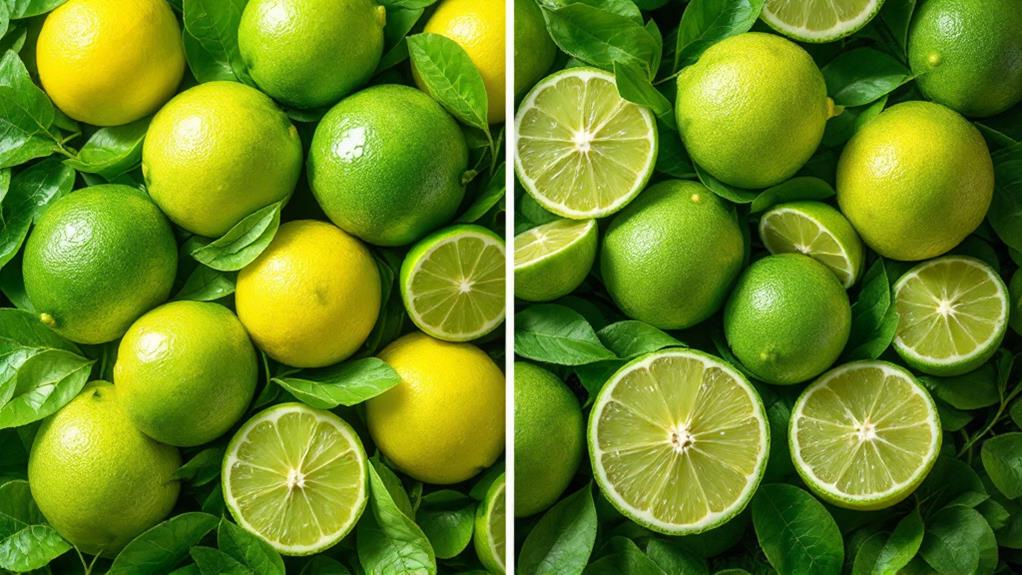
Often, when comparing key limes to other limes, you'll notice their unique characteristics. Key limes, known scientifically as Citrus aurantifolia, are smaller, more aromatic, and boast a distinct tartness with a slightly sweet flavor. This makes them a standout in culinary uses like key lime pie and cocktails. In contrast, Persian limes (Citrus latifolia) are larger and less acidic, offering a milder taste suitable for everyday use.
Key limes have a higher acidity level, which contributes to their stronger flavor profile. Here are some notable differences between key limes and Persian limes:
- Taste and Aroma: Key limes have a unique taste and are more aromatic, enhancing beverages and dishes with their distinct flavor.
- Appearance: Unlike Persian limes that stay green, key limes turn yellowish-green when ripe, indicating peak flavor.
- Seeds and Usability: Key limes contain more seeds, which might affect their convenience in recipes requiring juice or zest.
Nutritionally, both types offer similar health benefits, being rich in Vitamin C and antioxidants. However, the unique taste of key limes often makes them the preferred choice in specific recipes, adding a flavorful twist to your culinary creations.
Potential Risks
While key limes offer unique culinary advantages, it's imperative to be aware of potential risks associated with their consumption. If you're prone to citrus allergies, ingesting key limes might trigger symptoms such as hives, swelling, or difficulty swallowing. It's important to recognize these signs early and avoid further exposure.
Excessive intake can lead to gastrointestinal discomfort due to their high acidity. This same acidity can also contribute to dental erosion over time, so it's wise to consume them in moderation. For those with acid reflux, key limes may exacerbate symptoms like heartburn, making it significant to monitor your intake closely.
Skin contact with key lime juice can result in phytophotodermatitis, which increases sensitivity to sunlight and may cause skin irritation or burns. So, always be cautious when handling fresh limes outdoors or in sunlight.
Moreover, ensuring the freshness of key limes before consumption is critical. While fresh limes provide maximum flavor and nutritional benefits, spoiled ones can lead to foodborne illness. By being mindful of these potential risks, you can enjoy the many benefits of key limes safely.

